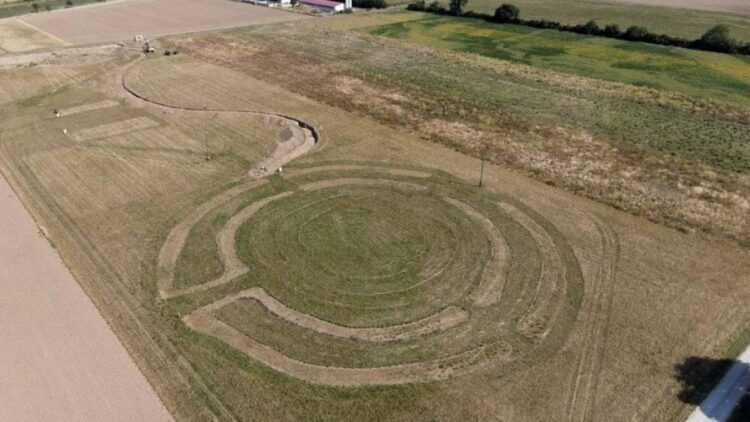A recent discovery has intrigued the scientific community. Ceremonial circles older than Stonehenge have been unearthed in Austria. Beneath a layer of cultivated soil, invisible to the naked eye, lay the traces of a civilization that forever transformed how humans inhabited the European continent. Now, a team of archaeologists has discovered three enormous circular structures that, according to Artnet News, were found south of Burgenland, very close to the Hungarian border. According to experts, these formations date back to the Middle Neolithic period, that is, 2,000 years before Stonehenge.
A series of circles, measuring 107 meters in diameter, can be observed in recently excavated areas
To give you an idea, the circular enclosures surrounded by ditches and embankments date from between 4850 and 4500 BC, according to experts. A series of circles, measuring 107 meters in diameter, can be observed in recently excavated areas. At a certain point in history, civilizations emerged amidst a series of unique circumstances that allowed them to develop specific skills for hunting, animal husbandry, agriculture, and other technologies that were passed down from generation to generation; hence the significance of this discovery, which reveals a small part of the society of that time.
“The Rechnitz site can be considered a supra-regional center of the Middle Neolithic”
Unlike other isolated finds, what is truly extraordinary about Rechnitz is the concentration of three monumental enclosures in a single location, suggesting that this area functioned as a highly significant ceremonial, economic, and possibly astronomical center. “The Rechnitz site can be considered a supra-regional center of the Middle Neolithic. (…) Due to the existence of three of these monumental structures dating from the fifth millennium BC, very close to each other,” Nikolaus Franz, director of Archaeology at Burgenland, told the aforementioned media outlet, where he explained the intriguing aspects of the research. The archaeological work, led by Archaeologie Burgenland in collaboration with the University of Vienna and the specialized company PANNARCH, has unearthed not only the circular enclosures but also the remains of dwellings and settlements.
The area was continuously inhabited for several centuries, coinciding with the period when the first agricultural societies began
The complexity of its access points, its geometric layout, and its potential alignment with solar phenomena such as the solstices—a feature observed in other similar sites like the Goseck Circle in Germany—suggest a ritual or symbolic function deeply rooted in the beliefs of these communities. This indicates that the area was continuously inhabited for several centuries, coinciding with the period when the first agricultural societies began to organize themselves into settled communities.
This area of southeastern Austria demonstrates that more than 6,500 years ago, Central European societies were capable of coordinating large-scale communal engineering projects
With discoveries like this, the scientific community can learn a great deal about the Neolithic period, for example, in this particular case; and with it, about agricultural and livestock farming techniques in what is now Burgenland in the fifth millennium BCE. This area of southeastern Austria demonstrates that more than 6,500 years ago, Central European societies were capable of coordinating large-scale communal engineering projects with spiritual, social, and scientific implications. After centuries of hunting and gathering, the gradual settlement of humans was truly revolutionary, scientists explain.
Examples like this demonstrate that many questions remain unanswered about the origins of humankind on planet Earth. For now, Rechnitz is emerging as one of the most promising prehistoric sites in Europe, not only because of its age, but also because of its potential to change our perception of history and show that more than six thousand years ago, humans were already leaving monuments that would endure into the 21st century.

